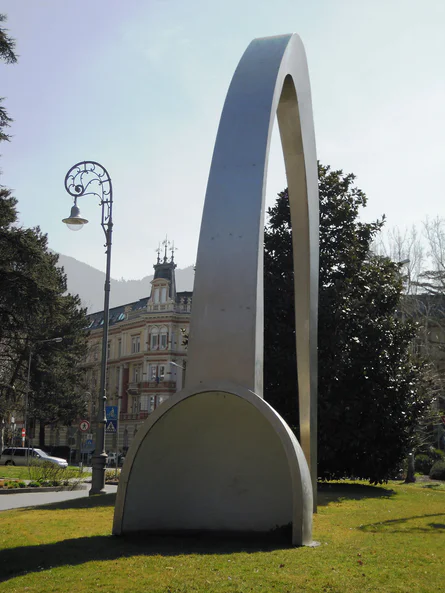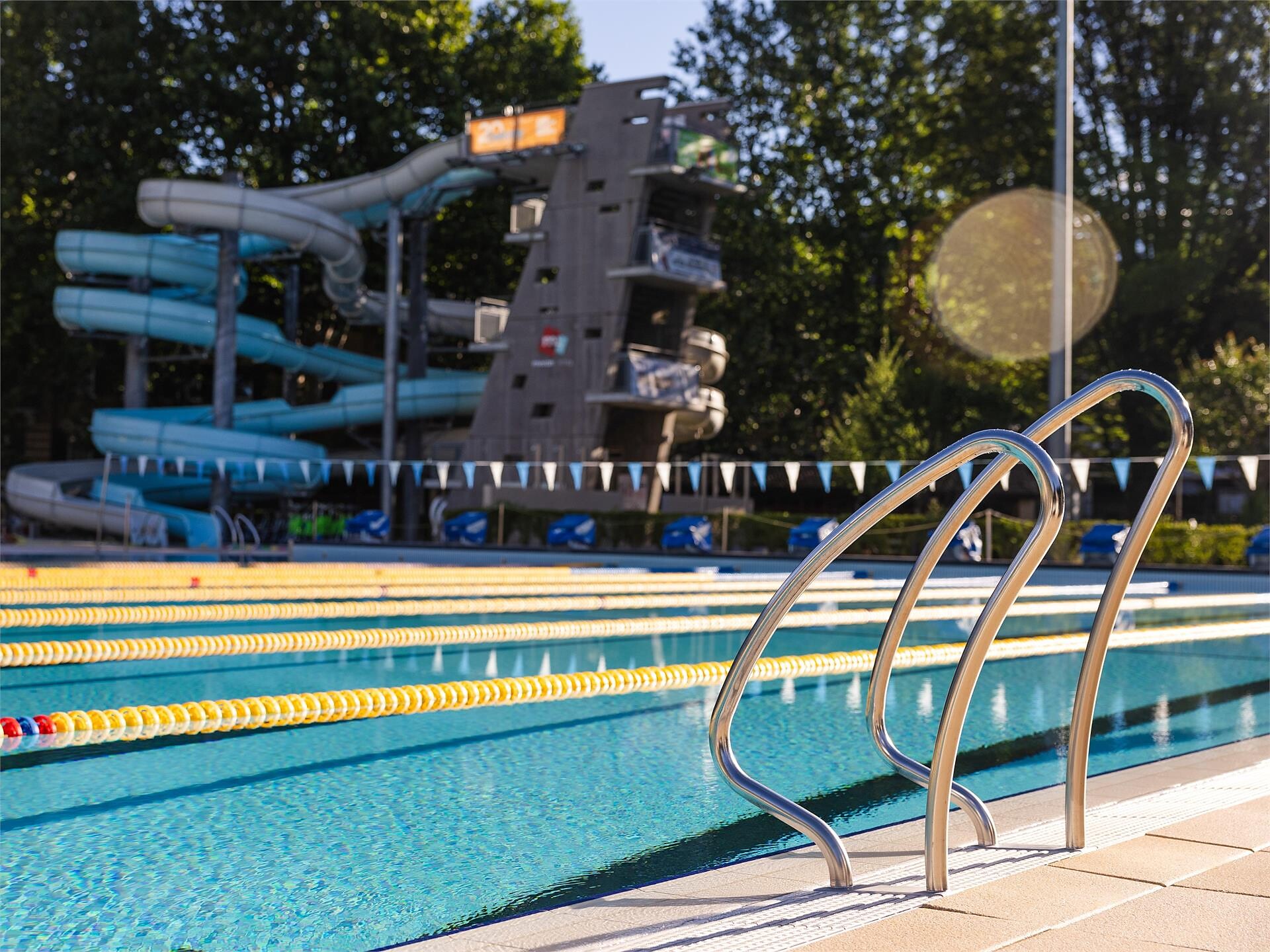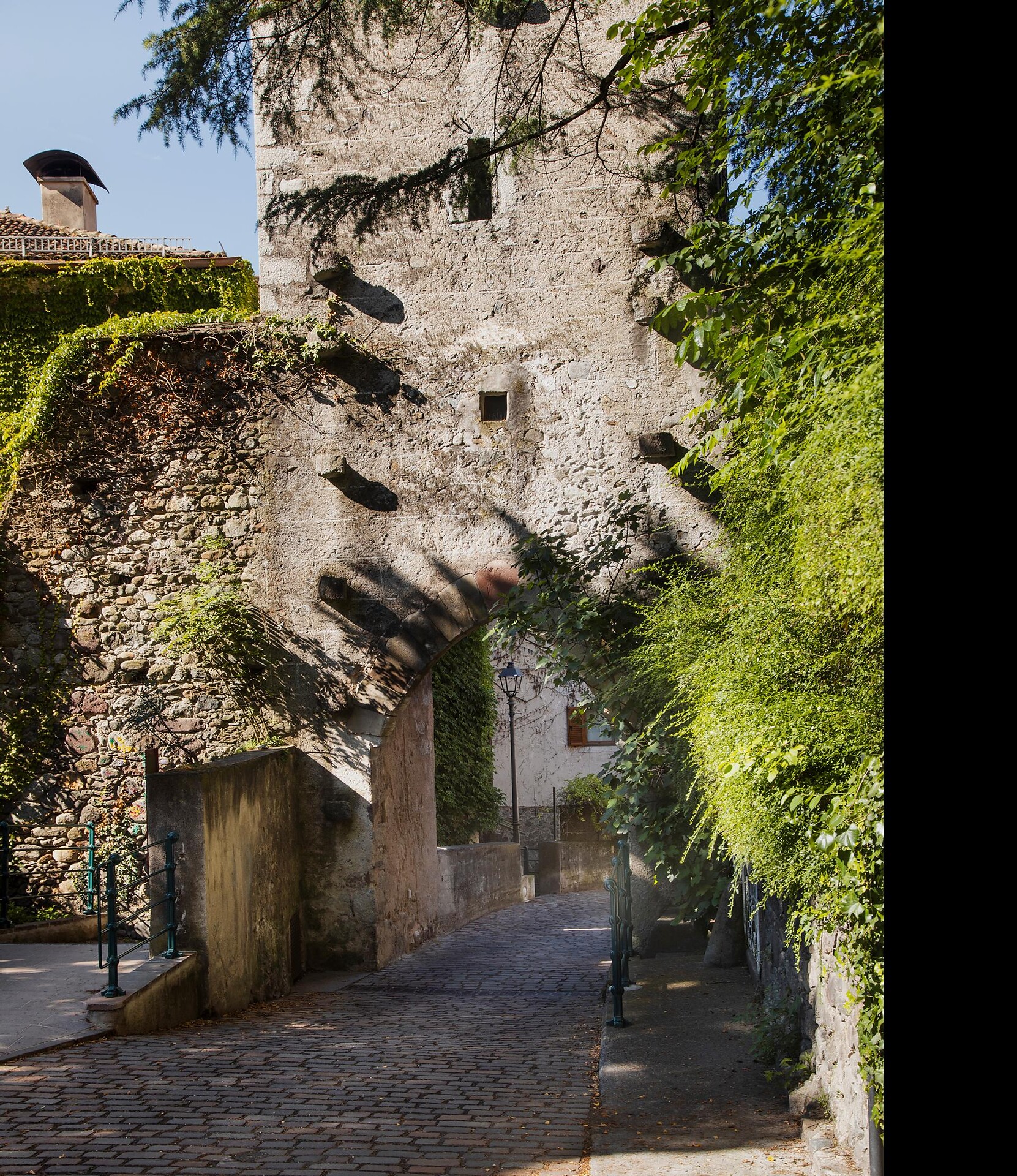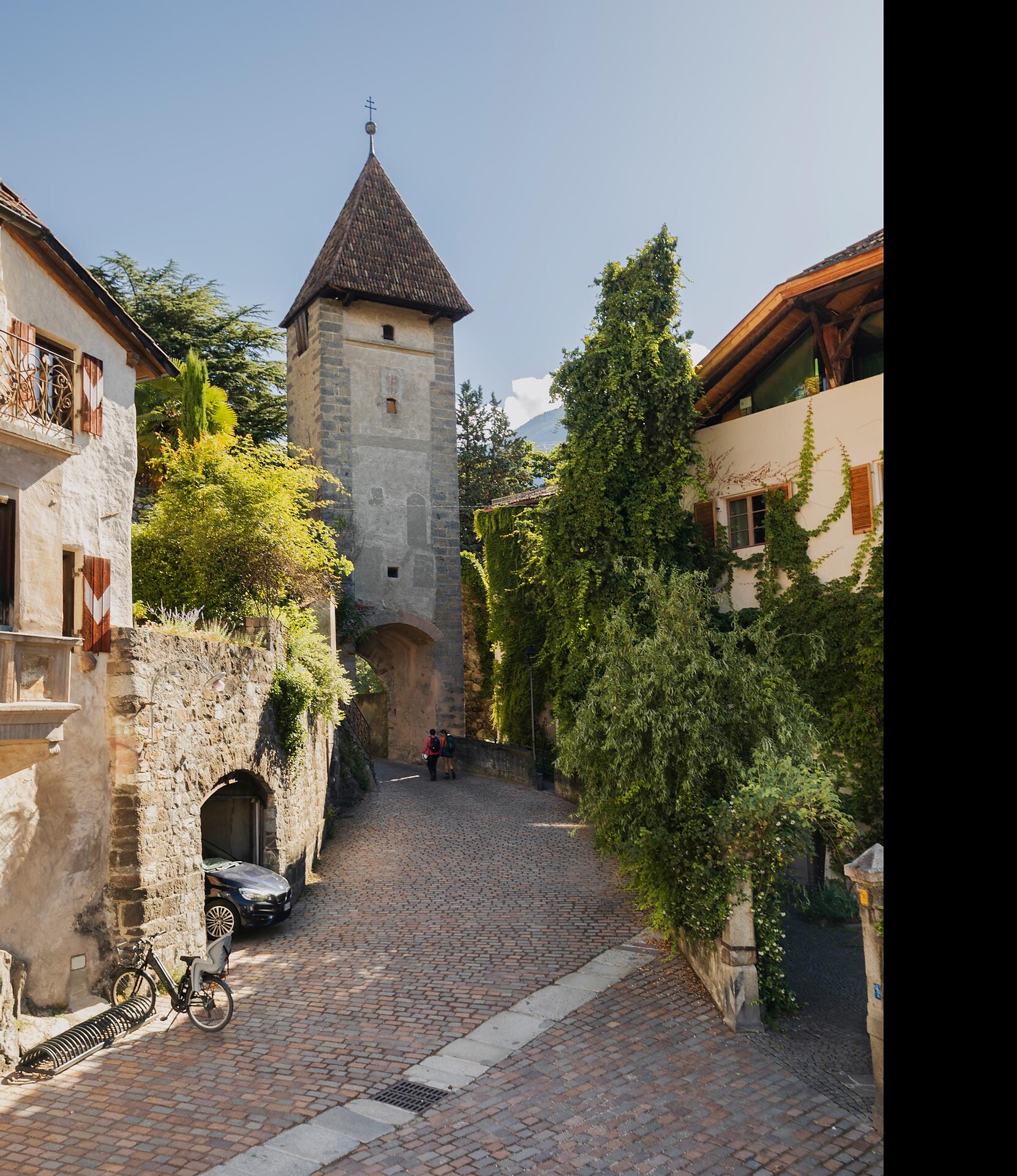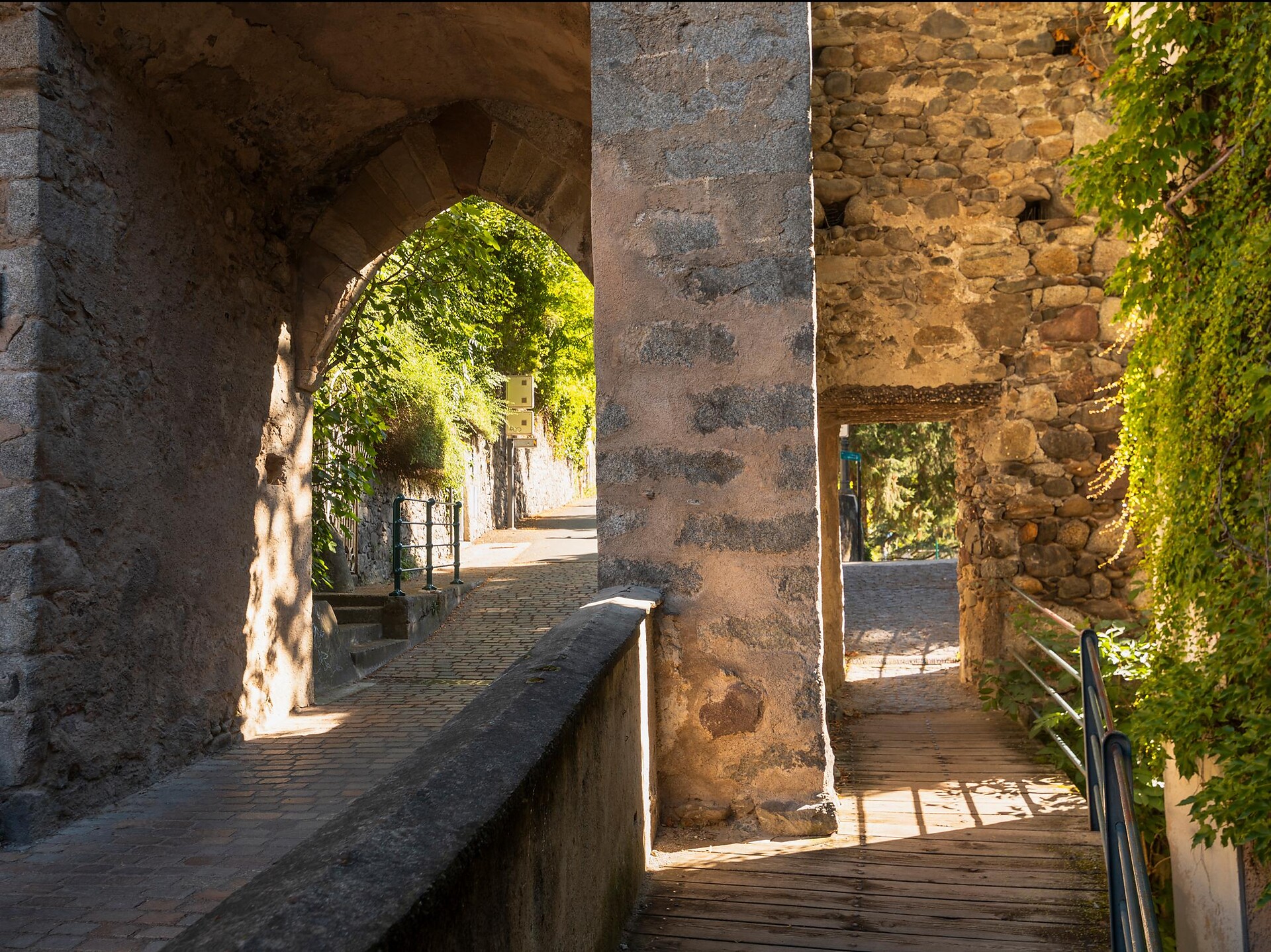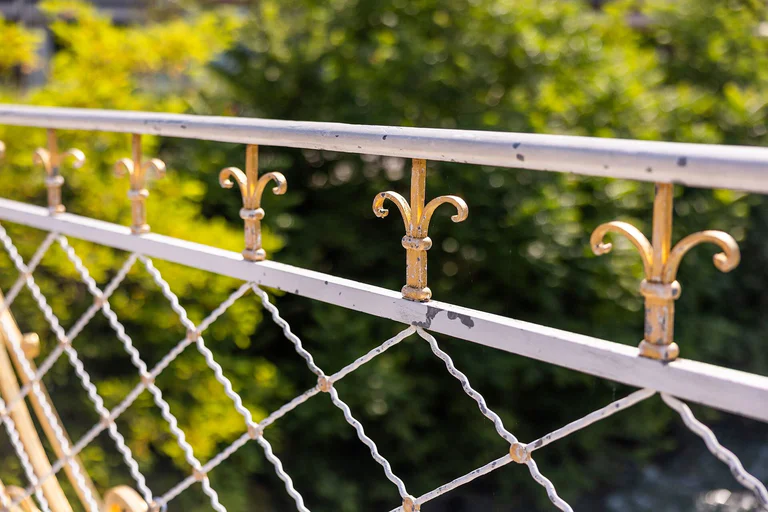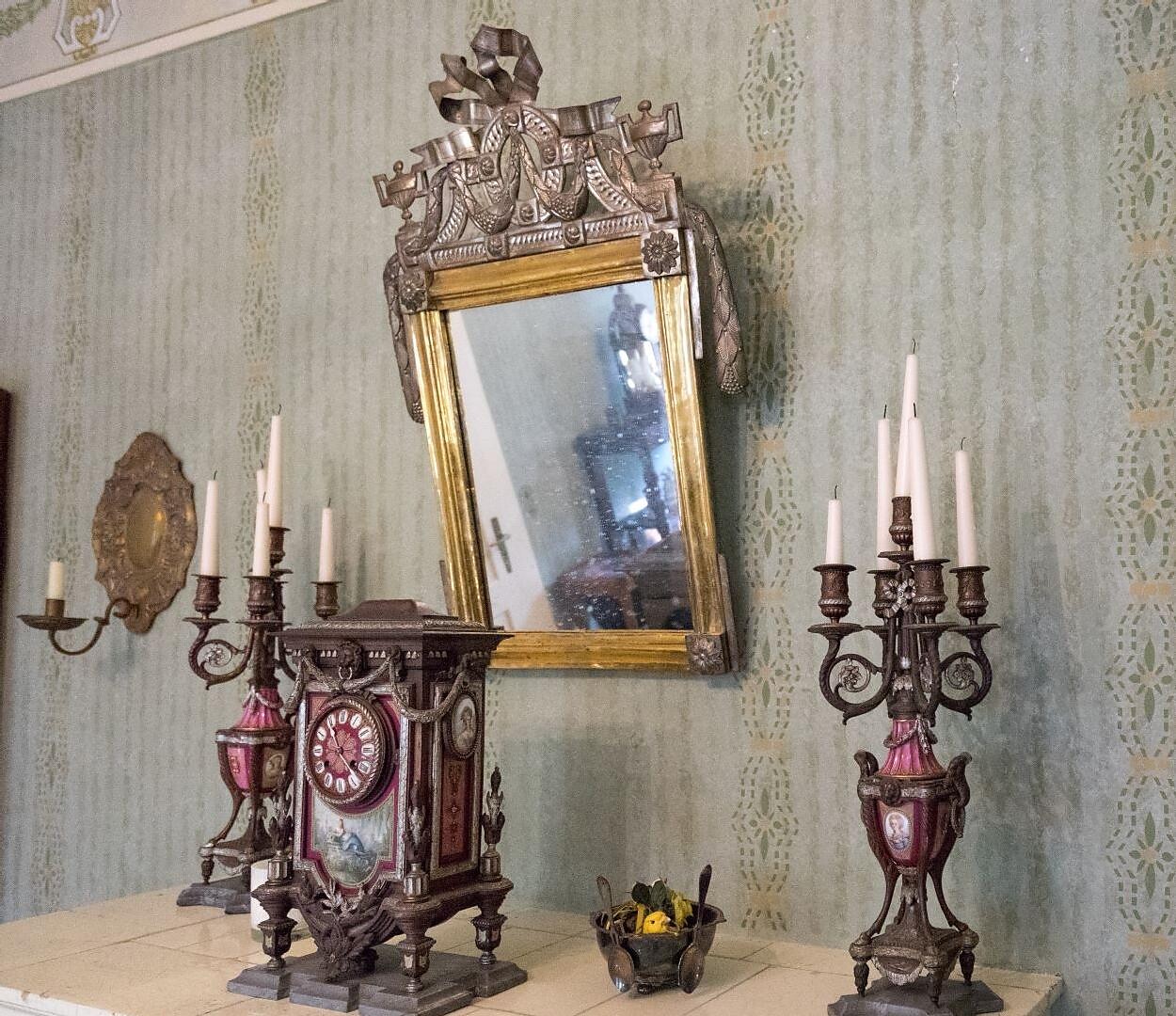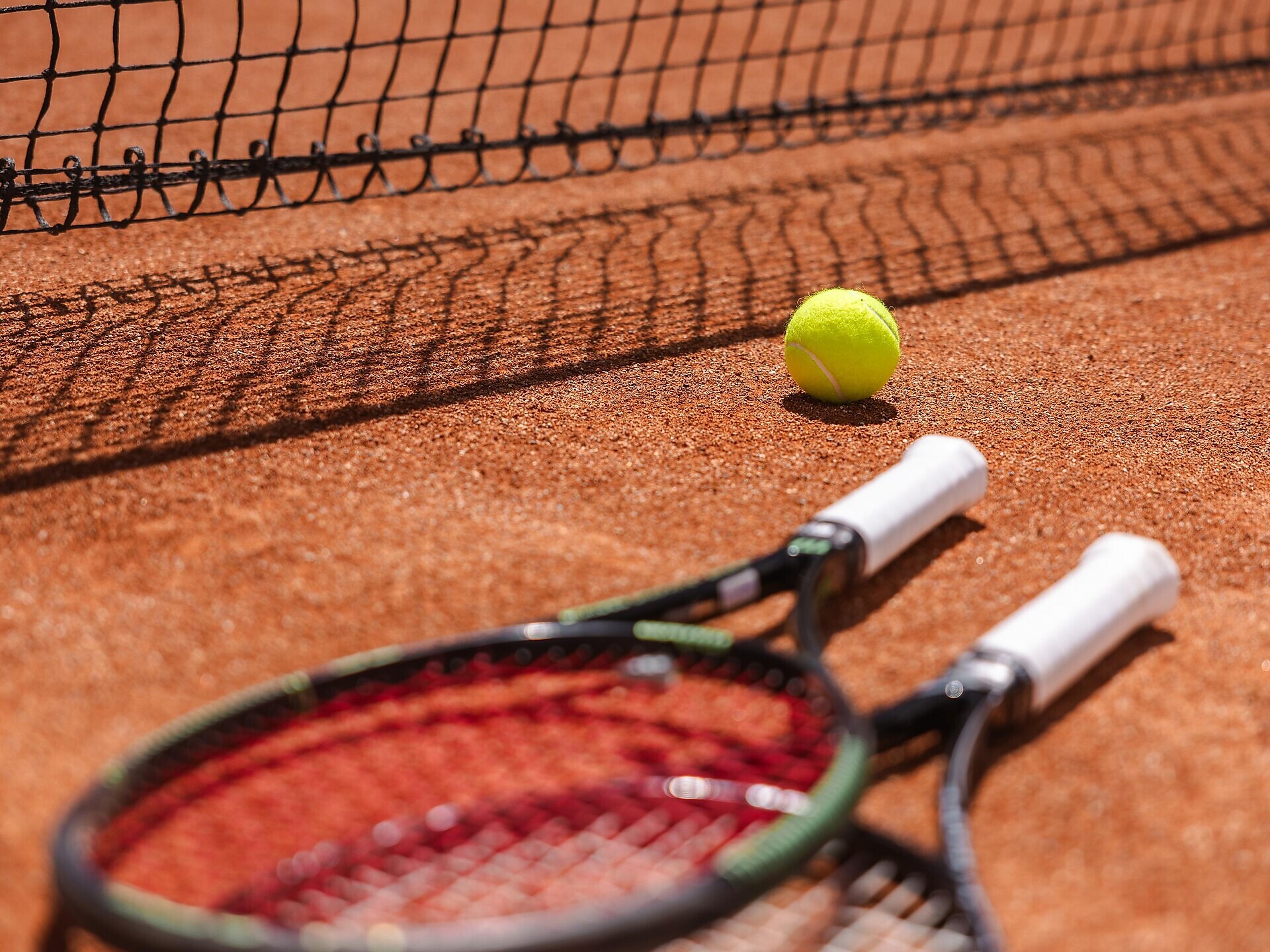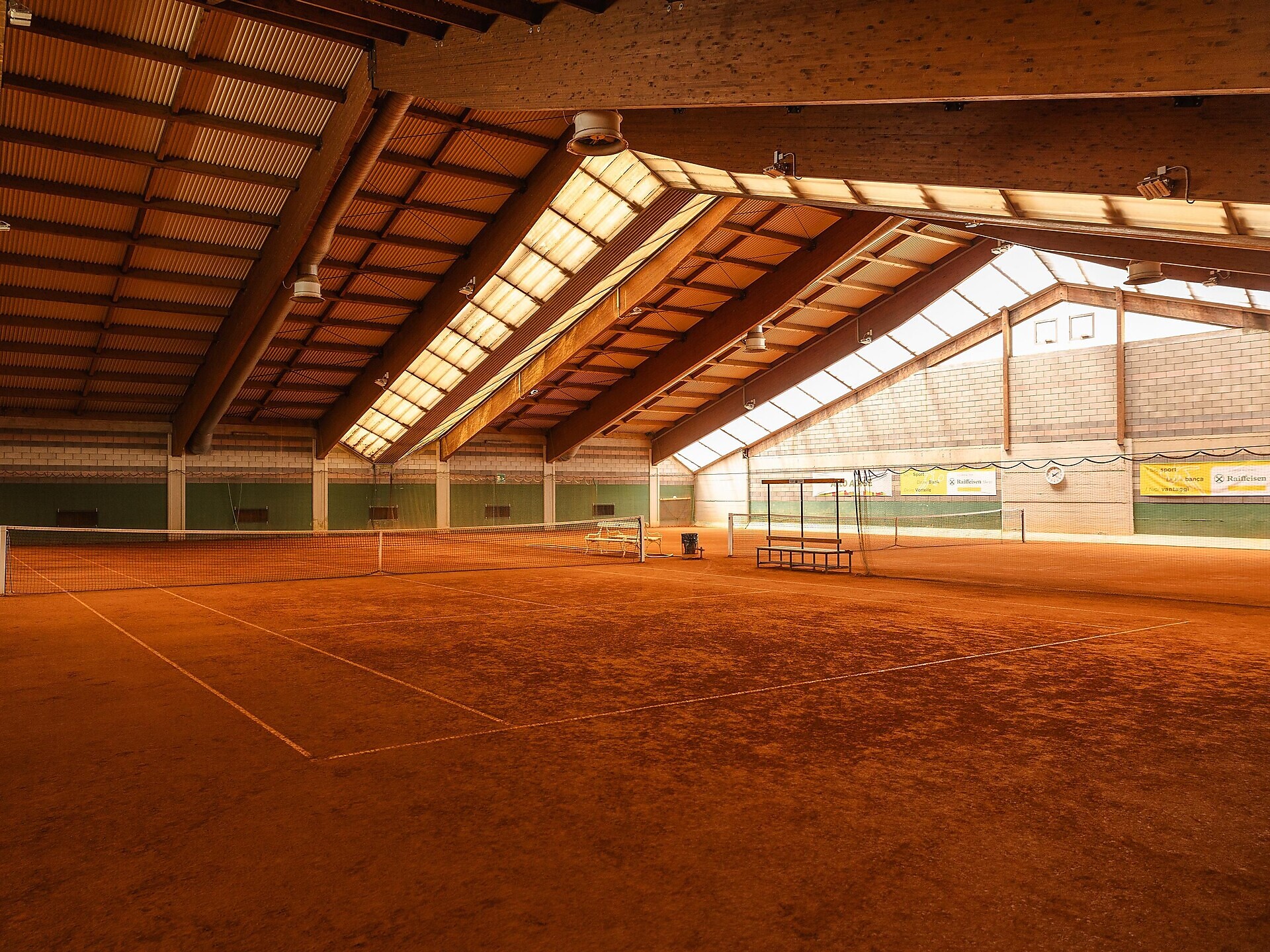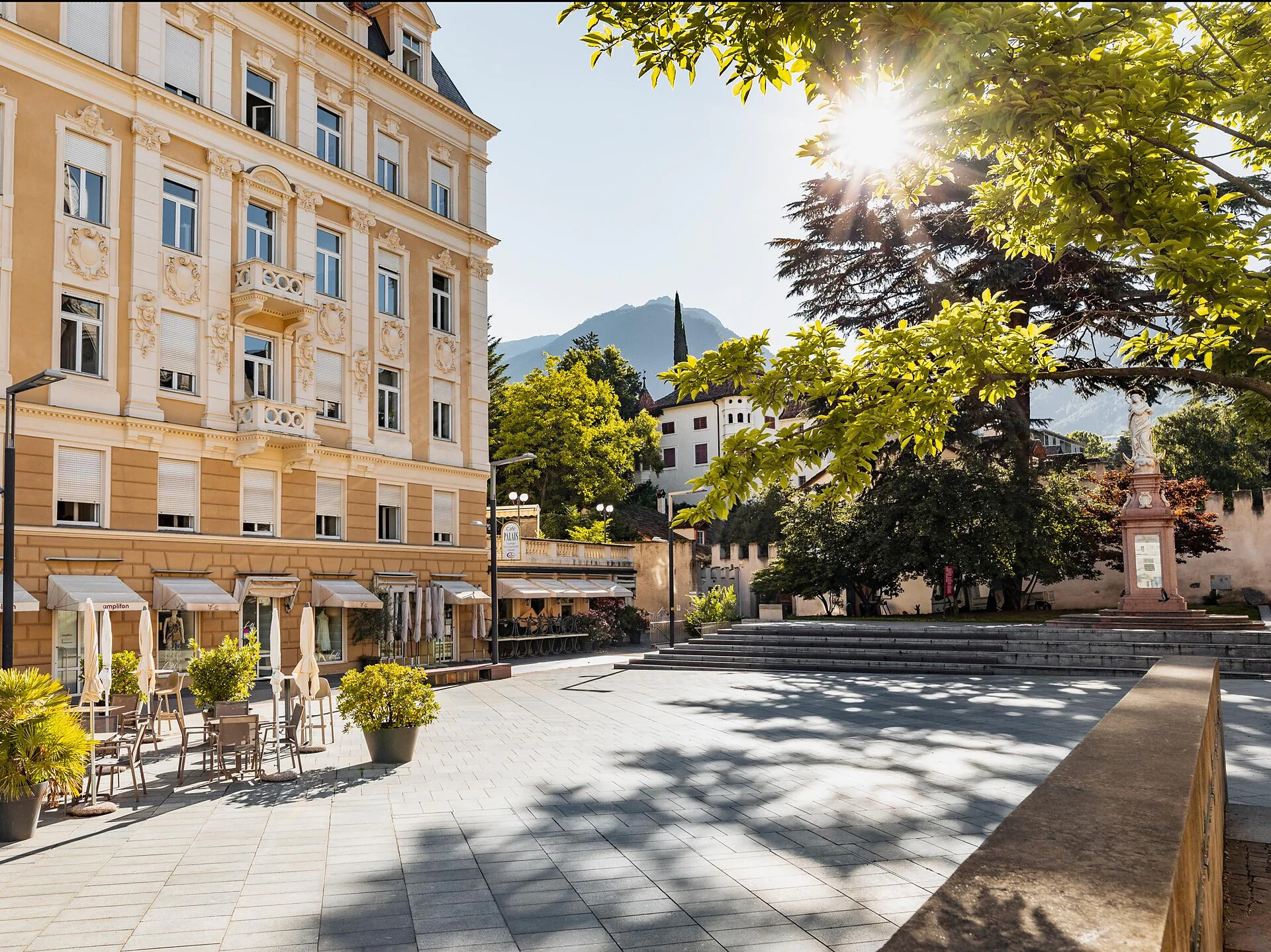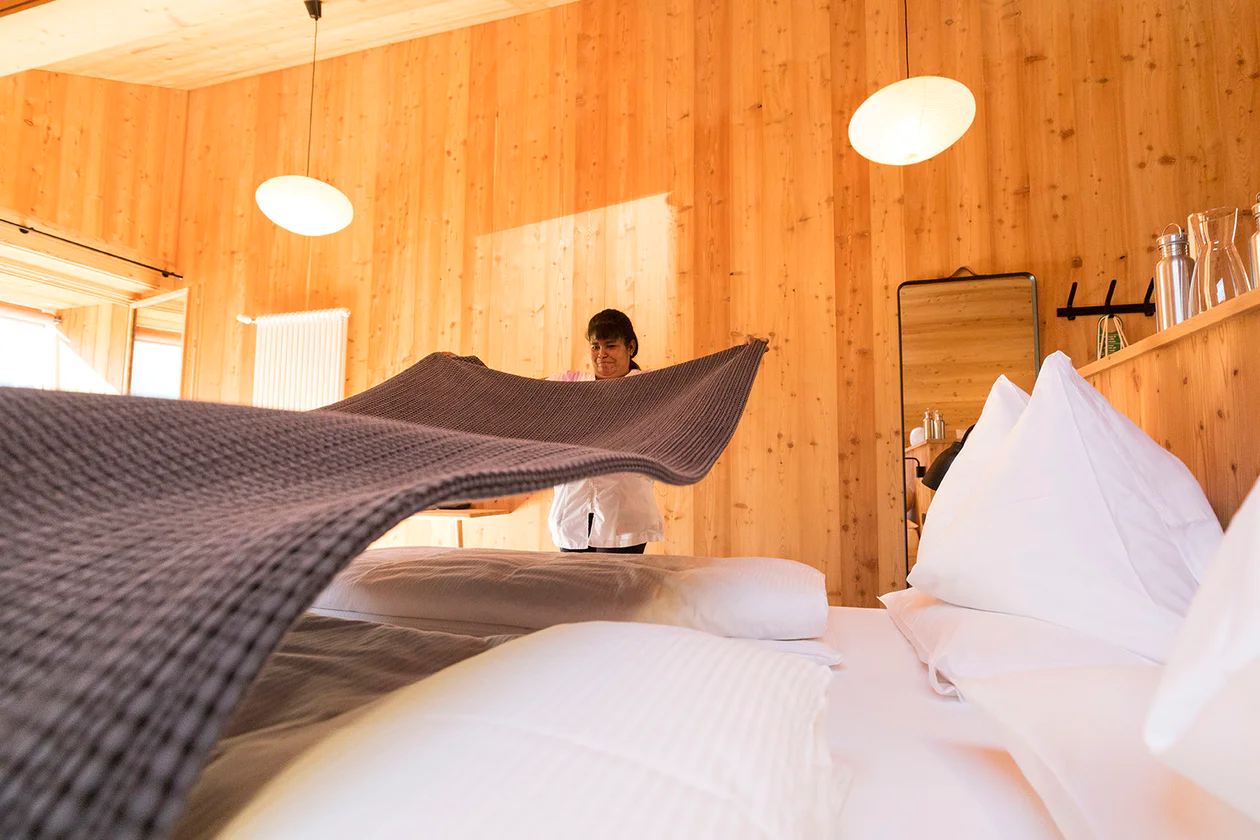The Wandelhalle, Merano’s iconic covered promenade, was built between 1864 and 1866 – even before the heyday of the Belle Époque. Today, it ranks among the city’s most culturally and historically significant landmarks. As one of the earliest examples of representative spa architecture in the Habsburg Monarchy, it also marks an important architectural transition: bridging the refined classicism of late Biedermeier with the emerging Jugendstil, distinguished by ornamental motifs and vivid wall paintings.
This light-filled colonnade follows the curve of the Winter Promenade along the Passer river – offering a shady retreat on warm summer days and a sun-drenched path for winter strolls. Initially met with public resistance, the project was championed by Merano’s visionary mayor, Valentin Haller, who saw in it the potential to redefine the town as a modern spa destination. He persisted – and prevailed. By 1891, the Wandelhalle had evolved into an open-air gallery, adorned with busts, commemorative plaques, and sweeping landscape paintings by local artists such as Lenhart, Complojer, and Demetz – celebrating South Tyrol’s natural beauty in painterly form.
Architecturally, the structure is a gem of 19th-century ironwork: its delicate cast-iron framework was produced by the acclaimed Viennese foundry Griedel, echoing the design language of Otto Wagner’s urban rail stations and the early Paris Métro. The arcade stretches nearly 100 metres, inviting passers-by to linger, promenade, or enjoy a concert beneath its sheltering arches.
Today, the Wandelhalle is a beloved public space in Merano: mornings begin with espresso at the adjacent café overlooking the Passer, while Saturdays bring a bustling flea market that attracts artists, collectors, and curious strollers. The venue also plays host to regular open-air concerts and cultural events, continuing the tradition of spa music that once defined Merano’s elegant leisure culture.
For younger visitors, the Wandelhalle offers a uniquely atmospheric encounter with history, nature, and art – a place where riverside flair and artistic expression come together in the open air. It also marks the start of several scenic routes: from here, the Kurpromenade leads past Art Nouveau villas, the Kurhaus, and on to the Tappeiner Promenade or the Steinerner Steg.
The Wandelhalle is also rich in anecdote: in the 19th century, it was a favourite gathering place for so-called “whey cure guests”, who would stroll here in the early morning light – fasting, breathing the fresh air, and accompanied by gentle music known as Molkenkonzerte.
At its centre stands the Hall of Honour, still bearing busts of historical figures – among them Duke Karl Theodor, brother of Empress Elisabeth and a practising ophthalmologist in Merano. The Wandelhalle thus offers not only aesthetic pleasure, but also quiet traces of the town’s storied past – captured in cast iron, paint, and sunlight.
